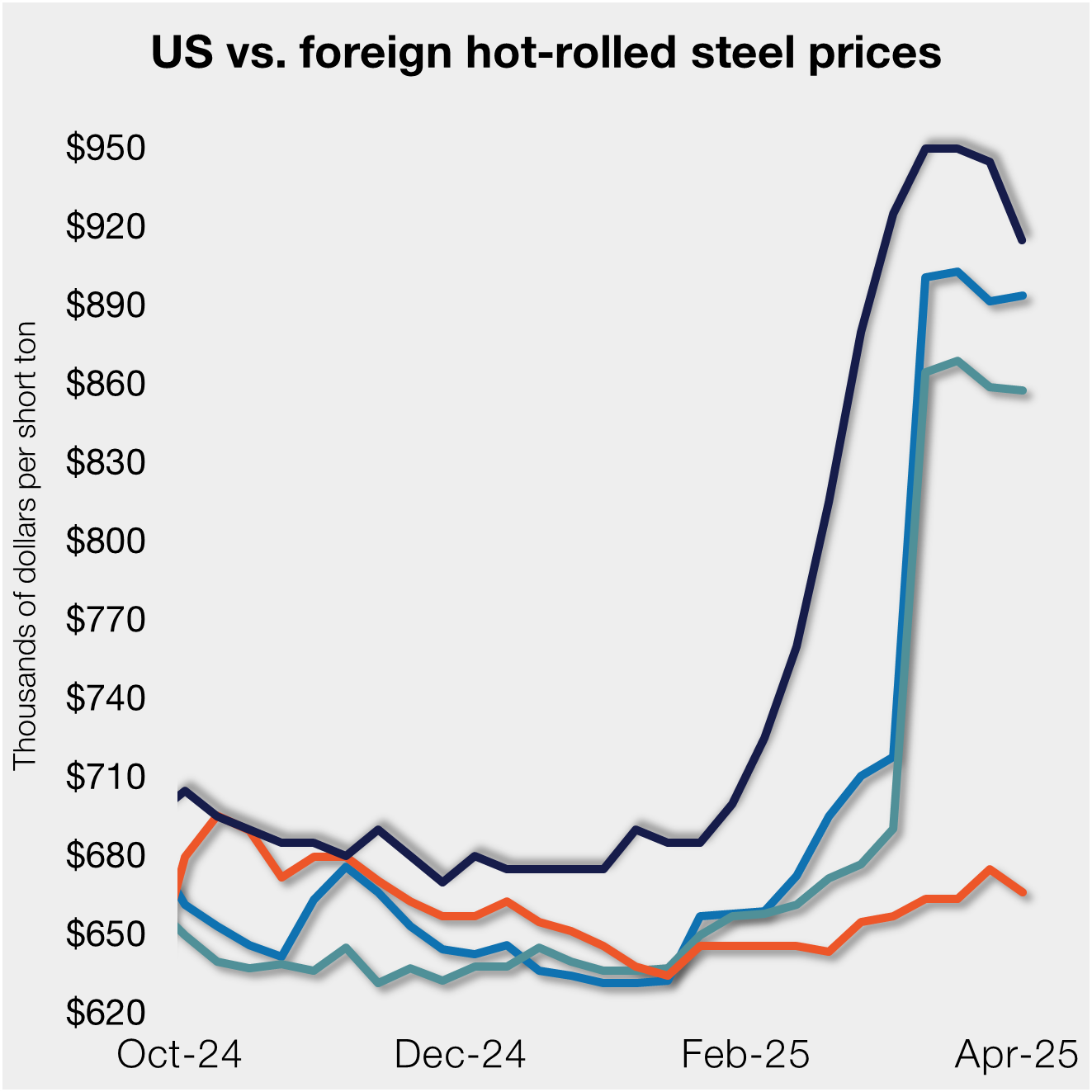Steel Products

Leibowitz on Trade: The Latest on the USMCA, China Deals
Written by John Packard
March 17, 2019
Trade attorney and Steel Market Update contributor Lewis Leibowitz offers the following update on events in Washington:
Steel and aluminum tariffs are plainly on the table as part of the USMCA approval strategy. Canada and Mexico insist on the removal of the tariffs as part of ratification of the new “NAFTA 2.0.” U.S. Trade Representative Robert Lighthizer and Treasury Secretary Steven Mnuchin admitted as much in their congressional testimony last week. Ambassador Lighthizer said the administration was looking at quotas as a replacement, but hinted that Canada and Mexico were not happy with that alternative, desiring a complete exemption instead.Could quotas replace tariffs for Canada and Mexico? It’s possible—as Ambassador Lighthizer acknowledged, quotas can be constructive or destructive, depending on the amounts and the terms. I’ve been looking at several options for a possible quota regime that could become important in addressing the tariff issue:
Are Canada and Mexico looking at a unique arrangement? Korea and Brazil (along with Argentina) have quota agreements entered into last year in a very different climate. The quotas on Brazil and Korea cap steel imports at 70 percent of the 2015-17 average for those countries. Because demand has increased since 2017 due to the booming U.S. economy, those tariffs “bite” (meaning that they really ration imports at a level well below market demand). There is no doubt that Canada and Mexico would reject such a “biting” quota on their steel and aluminum exports to the United States. They might agree to a quota system that allowed for reasonable growth—but this has not been acknowledged yet.
Will product exclusions be permitted on an expedited basis? Product exclusions present real problems for U.S. companies and their suppliers. There are tens of thousands of requests that have never been decided. Many have been denied, presumably based on domestic industry objections. Domestic producers have alleged they can make products that they have never actually produced in commercial quantities. The lack of action and of a rigorous process for deciding exclusion requests arguably makes that process an unreliable and unacceptable safety valve for foreign suppliers and U.S. manufacturers. Canadian and Mexican negotiators appear to be open to discussing an improved system for exclusions.
Commitment to prevent transshipment? U.S. negotiators express concern that Canadian and Mexican exemptions from tariffs could undermine the Section 232 remedies previously imposed, which they claim have led to resurgent steel and aluminum industries. Sources have suggested that Canada and Mexico could agree to commit to end transshipment of these products as part of a deal.
China Deal Likely?
Secretary Mnuchin said last week that no U.S.-China trade deal is likely before the first of April. Secretary Mnuchin and most analysts expect a deal to be announced soon. Many reports suggest that the final details of the wording of an agreement are in the works. Given that the texts need to be translated and analyzed by lawyers in both countries, it’s not surprising that this takes a while. The draft agreements were prepared in English, and only recently have Chinese translations been drafted. (It appears that more Chinese negotiators know English than the reverse. That seems likely to me.) We will see what happens in April.
Customs Rulings on China
An interesting factoid: In February 2018, months before China tariffs were proposed, U.S. Customs and Border Protection issued 100 “binding rulings” on imports from China. In February 2019, 190 such rulings were issued, an increase of 90 percent. I thought that might be due to a backlog of rulings delayed from January to February because of the government shutdown (there were no Customs rulings issued between Dec. 21, 2018, and Jan. 28, 2019). I checked March 2019 rulings compared to March 2018 to see if there was a trend; through March 12, 2019, Customs issued 85 rulings on China imports, while in March 2018 104 rulings were issued in the entire month. At the rate of the first half of March, the total number of rulings for March will increase to about 170.
There is nothing surprising about this. The China tariffs have disrupted supply chains of U.S. manufacturers. Because the tariffs are solely based on the tariff classification of imported products, importers, Customs brokers and attorneys have been flooding the agency with requests to determine the correct classification for tariff purposes. Many tariff numbers are subject to the China tariffs and many are not. A favorable ruling can save a company millions of dollars. Customs law has never been more fascinating (at least not since the Smoot-Hawley Tariff, which imposed 50+ percent tariffs on most U.S. imports.)
Lewis Leibowitz
The Law Office of Lewis E. Leibowitz
1400 16th Street, N.W.
Suite 350
Washington, D.C. 20036
Phone: (202) 776-1142
Fax: (202) 861-2924
Cell: (202) 250-1551

John Packard
Read more from John PackardLatest in Steel Products

Don’t miss next week’s Community Chat with Algoma Steel CEO Michael Garcia
Algoma Steel CEO Michael Garcia will be the featured guest on SMU’s Community Chat webinar on Wednesday, April 9, at 11 a.m. ET. Register here for free to join the timely conversation. As a key Canadian flat-rolled steel producer and supplier to the US, Algoma can offer valuable insight into the evolving tariff landscape — its challenges […]

AISI: US steel shipments decline in February
Domestic steel shipments decreased month over month and year on year in February, according to the latest data from the American Iron and Steel Institute (AISI).

US, offshore HRC prices differ widely on tariff situation
Domestic hot-rolled (HR) coil prices declined this week, a trend again reflected in most offshore markets. Despite similarities, the shifting tariff landscape has made for a wild ride in Q1.

Atlas Tube debuts ‘HSS Connections Hub’
Atlas Tube, part of Zekelman Industries, has introduced an engineering resource aimed at simplifying Hollow Structural Sections (HSS) connection design for structural engineers and fabricators.

Nucor keeps HRC price unchanged
Nucor paused its weekly hot-rolled (HR) coil price this week, keeping it flat for the first time since Jan. 21. This comes after a nine-week rally that saw the company increase prices by double-digits for eight of those weeks.
